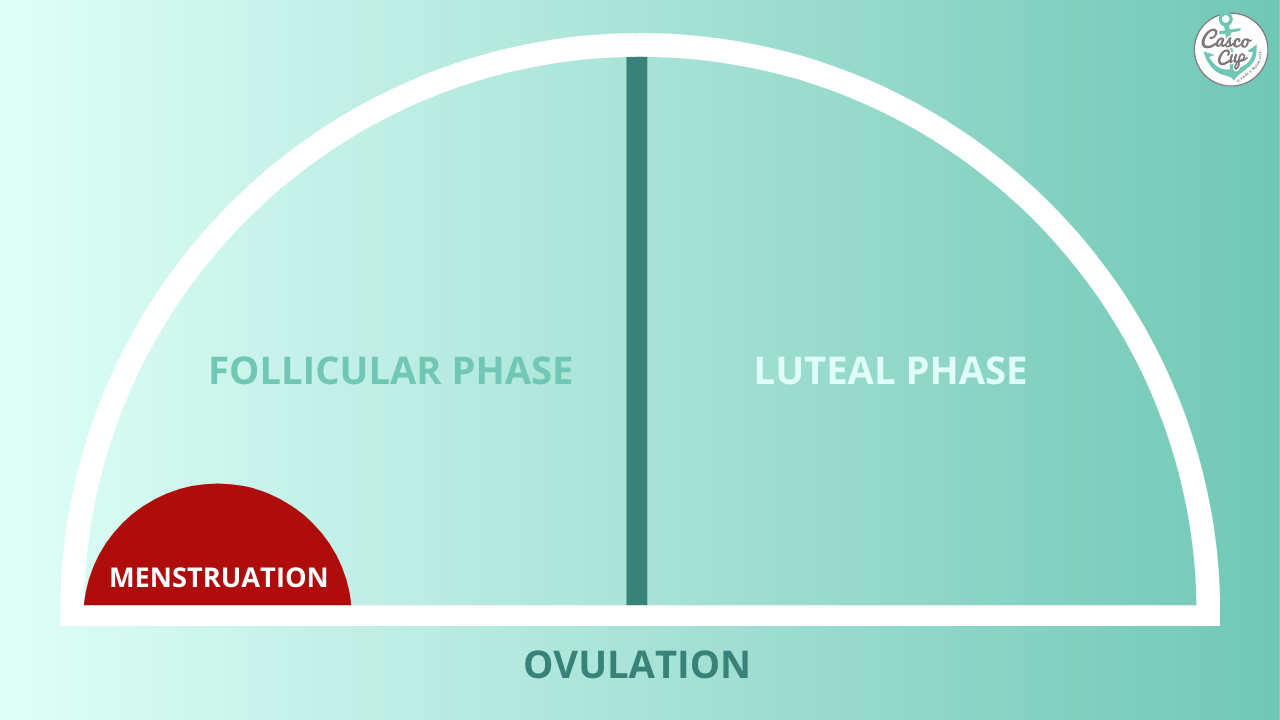What Is the Follicular Phase?
The follicular phase is the longest step in the menstrual cycle, lasting from the first day of a period to ovulation, meaning the release of the egg. This critical step in the development of an egg pre-fertilization (meaning penetrative sex), and can last between 11 and 27 days. Here's what happens during the follicular phase, what its length may indicate, and how it differentiates from other steps in your cycle.
DISCLAIMER: This content was written for informational purposes only. It is not medical advice.
What Is the Follicular Phase?
This part of the menstrual cycle occurs between the first day of a period and lasts until ovulation. During the follicular phase, the body produces more estrogen — a hormone — and prepares to release an egg.
More specifically, the follicular phase is defined by the release of follicle stimulating hormone (FSH). Hormones are the body’s way of coordinating complex processes in various important systems, such as the reproductive system. Once FSH reaches the ovaries, the organs that store a woman’s eggs, they begin to prepare for the release of an egg, also known as ovulation.
The body develops multiple eggs at the same time, though they are at different stages of maturity. Specifically, eggs are developed within what are called follicles, meaning sacs containing fluid.
Fun Fact: The Follicular phase overlaps with the period, meaning the secretion of blood and menstrual fluid. The second half of this phase overlaps with what’s know as the proliferative phase.
Approximately halfway through the follicular phase, which lasts between 10 and 22 days, the most developed follicle begins to produce estrogen in preparation for its release. This phase of the menstrual cycle ends with ovulation.

The 4 Phases of the Menstrual Cycle
The menstrual cycle is divided into four major phases, defined by several important events:
- Menstrual Phase: The menstrual cycle starts with the release of the unfertilized egg, also known as a period. During this phase, hormone levels drop and the body gets rid of the tissue and blood that. would have allowed for a pregnancy. PMS symptoms often occur during this phase.
- Follicular Phase: The first day of a woman’s period marks the start of the Follicular phase: The body’s hormones communicate with the ovaries, which begin growing between 20 and 5 eggs, each within its own follicle. The largest and healthiest egg will reach maturity, while the rest are re-integrated with the body.
- Ovulation Phase: Brought on by rising estrogen levels during the follicular phase, ovulation occurs. In this day-long phase, the body releases the mature egg down the fallopian tube.
- Luteal Phase: Once the egg leaves the follicle, the follicle will transform into what’s called the corpus luteum. Its purpose is to release hormones that thicken the uterine lining. The corpus luteum will be resumed into the body without pregnancy. If a woman is pregnant, it will remain.
These phases of varying lengths make up the menstrual cycle, meaning the process of preparing an egg for fertilization, releasing it from the ovaries, and thickening the uterine lining to receive a fertilized egg. Without fertilization, a woman’s body sheds the uterine lining and the egg, which constitutes what we know of as a period.
Follicular vs. Luteal Phase
- The follicular phase lasts between 11–27 days; 16 days is average.
- The luteal phase lasts between 11–17 days; 13 days is average.
These two major phases are named after the elements that define them: The follicular phase revolves around the maturation of an egg within a follicle, whereas the luteal phase involves the follicle’s transformation into the corpus luteum.
When does the follicular phase shift to the luteal? When the follicle releases the egg and becomes the corpus luteus.
Knowing the length of these phases can be critical to an individual’s likelihood of becoming pregnant or incidate whether a woman is nearing menopause.
What Does a Long Follicular Phase Mean?
More generally, a long follicular phase means that it takes longer for a woman’s egg to mature. This makes her entire menstrual cycle longer. There are several reasons why this could be, including:
- It’s natural. Some women have longer menstrual cycles and longer periods.
- Birth control, which may lengthen a woman’s menstrual cycle.
- Vitamin D deficiency.
Having a long follicular phase has no impact on fertility or the likelihood of pregnancy.
What Does a Short Follicular Phase Mean?
By contrast, a shorter phase may impact someone’s likelihood of becoming pregnant. This may be due to changing hormone levels, which may cause a follicle to mature faster than the egg. This can result in the premature release of an egg and lower the likelihood of pregnancy.
A woman’s follicular phase may shorten in her late thirties. It is often a sign of approaching menopause.
